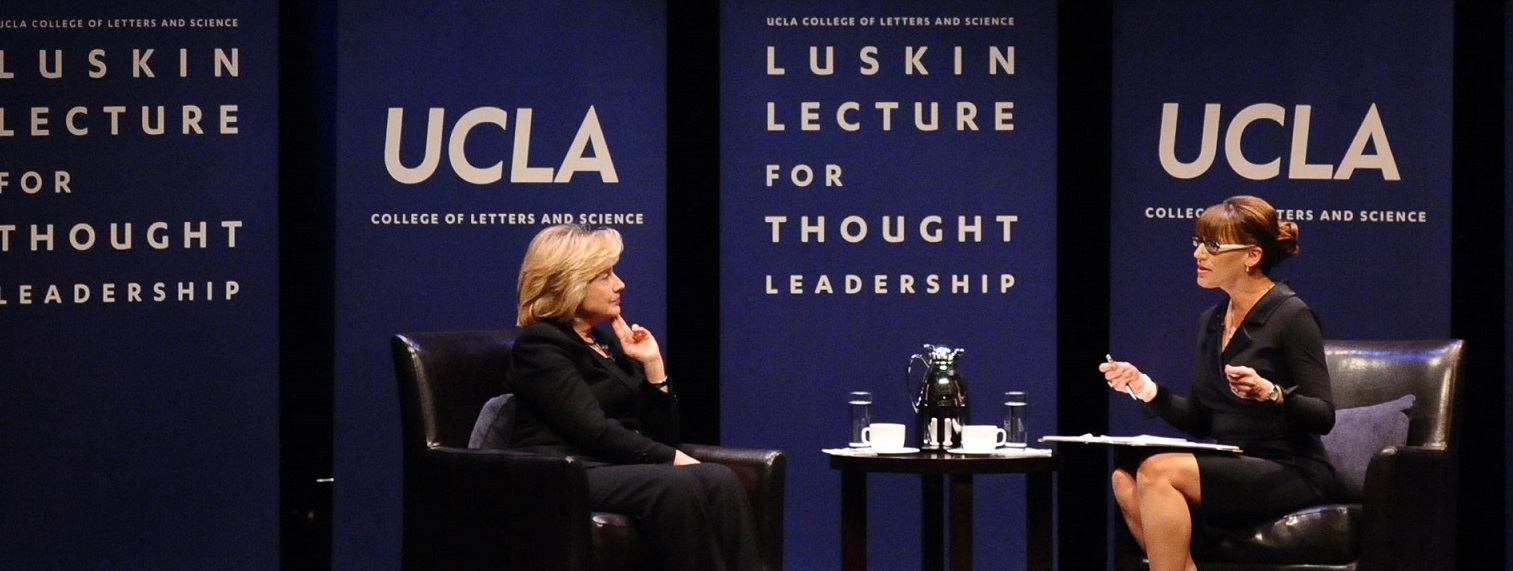
In the 2016 sci-fi movie “Arrival,” a linguist and a theoretical physicist race against time to communicate with endangered extraterrestrial heptapods wishing to share their wisdom and technologies with the human race so it will survive and one day return the favor.
在2016年上映的科幻电影《降临》(Arrival)中,一名语言学家和一名理论物理学家争分夺秒地与濒危的外星七脚动物交流,这些七脚动物希望与人类分享他们的智慧和技术,让人类生存下来,并有一天回报人类。
At the University of California, Berkeley, a real and more down-to-earth mission to decode an unknown form of communication is underway. Linguist Gasper Begus and computer scientist Shafi Goldwasser are part of an international team of researchers attempting interspecies communication with sperm whales by deciphering their deafening, 200-plus decibel clicking sounds, or codas.
在加州大学伯克利分校(University of California, Berkeley),一项真实的、更实际的任务正在进行中,目的是破译一种未知的通信形式。语言学家Gasper Begus和计算机科学家Shafi Goldwasser是一个国际研究团队的成员,他们试图通过破译抹香鲸200多分贝的震耳欲聋的咔哒声或尾语来与抹香鲸进行物种间交流
They are among the key members of the Cetacean Translation Initiative (CETI), a newly launched, five-year multidisciplinary project aimed at cracking sperm whales’ Morse code-like communications off the Caribbean island of Dominica, to gain a deeper knowledge of the ocean’s brainiest predators and to preserve their habitat from further human disruption.
他们是鲸类动物翻译倡议(CETI)的关键成员之一,这是一个新启动的五年多学科项目,旨在破解抹香鲸在加勒比海多米尼加岛的摩尔斯电码(类似于摩尔斯电码的通信),以更深入地了解海洋中最聪明的捕食者,并保护它们的栖息地不受人类进一步破坏。
With scientists from 16 different research enterprises, CETI is estimated to be the largest effort at interspecies communication in history. Whether on land or in the ocean, it is a daunting feat.
据估计,CETI的科学家来自16家不同的研究企业,是有史以来在物种间交流方面做出的最大努力。无论是在陆地上还是在海洋中,这都是一项令人望而生畏的壮举。
“We’re dealing with a completely unknown form of communication, and gathering the data can be challenging,” said Begus, an assistant professor of linguistics in UC Berkeley’s Division of Social Sciences and director of the Berkeley Speech and Computation Lab. CETI’s engineering team is building a system of drones that will automatically tag the whales and record their vocalizations and other parameters, such as orientation, velocity and temperature.
贝古斯是加州大学伯克利分校社会科学部的语言学助理教授,也是伯克利语音与计算实验室的主任,他说:“我们正在处理一种完全未知的交流形式,收集数据可能是一项挑战。”CETI的工程团队正在建立一个无人机系统,该系统将自动标记鲸鱼,并记录它们的声音和其他参数,如方向、速度和温度。
Preceding humans on Earth by some 15 million years, sperm whales’ gigantic brains give them the neural capacity for planning, sophisticated communication and social interactions that last for decades. Their silvery, 30-plus-ton bodies store carbons and play a supporting role in cooling the earth.
抹香鲸比人类早出现在地球上约1500万年,其巨大的大脑使它们拥有长达数十年的规划、复杂交流和社会互动的神经能力。它们银白色的、30多吨重的身体储存着碳,在为地球降温方面起着辅助作用。
Sperm whales organize themselves into large, matrilineal families and clans, with each group identifying itself with its own signature dialect. Their powerful clicking sounds are emitted via a mixture of organs known as spermaceti that are atop their skulls. The whales’ sound patterns are learned — not innate, like a dog’s bark, Begus said.
抹香鲸把自己组织成大型的母系家族和氏族,每个群体都用自己特有的方言来识别自己。它们强大的咔哒声是通过位于头骨顶部的一种叫做鲸脑的混合器官发出的。贝古斯说,鲸鱼的声音模式是后天习得的,不像狗的吠叫那样是天生的。
Their deep-ocean habitats are threatened by noise pollution, climate change, commercial fishing and military activities that include underwater explosions and sonar technology.
它们的深海栖息地受到噪音污染、气候变化、商业捕鱼和包括水下爆炸和声纳技术在内的军事活动的威胁。
If left to die naturally, sperm whales sink to the ocean floor, taking with them the carbons stored in their bodies that would otherwise have been released into the atmosphere if the whales had been hunted and brought to land. Moreover, whale excrement contributes to the growth of phytoplankton, which is estimated to capture some 40 percent of all carbon dioxide produced.
如果任由抹香鲸自然死亡,它们会沉入海底,带走体内储存的碳,如果它们被猎杀并被带到陆地上,这些碳就会被释放到大气中。此外,鲸鱼粪便有助于浮游植物的生长,据估计,浮游植物捕获了大约40%产生的二氧化碳。
“If we get to know sperm whales better by learning their communication and the full scope of their cognitive and social life, it’s harder for us as a species to treat them like non-sentient beings and destroy them,” Begus said.
贝古斯说:“如果我们通过了解抹香鲸的交流方式以及它们的认知和社会生活来更好地了解它们,作为一个物种,我们就更难把它们当作没有知觉的生物来对待并消灭它们。”
In their respective labs at UC Berkeley, Begus and Goldwasser, a winner of the prestigious Association for Computer Machinery’s A.M. Turing Award, are using artificial intelligence, including deepfake technology, to identify linguistic patterns in recordings of what may eventually amount to billions of sperm whale clicks.
在他们各自位于加州大学伯克利分校的实验室里,贝格斯和戈德瓦塞尔分别获得了著名的计算机机械协会的A.M.正在使用包括深度造假技术在内的人工智能来识别记录中的语言模式,这些记录最终可能会达到数十亿次抹香鲸的点击。
“In the case of translation of one human language to another, a ‘rosetta stone’ is often available, which makes this a so-called supervised language translation problem. And even when such examples are not known, at the very least we have a good sense of what may be the general topics and context in which conversations are taking place, so as to detect when a proposed translation is nonsensical,” said Goldwasser, who at UC Berkeley is director of the Simons Institute for the Theory of Computing and the C. Lester Hogan Professor in Electrical Engineering and Computer Sciences.
“在将一种人类语言翻译成另一种语言的情况下,‘罗塞塔石’通常是可用的,这就成为了所谓的监督语言翻译问题。即使不知道这样的例子,至少我们对对话发生的一般话题和上下文有一个很好的感觉,以便检测什么时候提出的翻译是荒谬的,”加州大学伯克利分校的西蒙斯计算理论研究所主任和C. Lester Hogan电子工程和计算机科学教授Goldwasser说
“For CETI,” she added, “we need to significantly extend the theory and practice of unsupervised language translation, where no correct translation examples are given, to a setting where our prior knowledge on what the whales may be communicating about is limited, and we can’t run controlled experiments. New methods to model what the whales are communicating about will guide us when we are making progress in the translation task or, alternately, rule out proposed translations.”
“对于CETI来说,”她补充说,“我们需要将无监督语言翻译的理论和实践显著扩展,在这种情况下,没有给出正确的翻译示例,我们对鲸鱼可能在交流什么方面的先验知识有限,我们不能进行控制实验。当我们在翻译任务中取得进展时,模拟鲸鱼交流内容的新方法将指导我们,或者排除拟议的翻译。”
As with any unknown form of communication, the sounds sperm whales make to communicate with one another and navigate via echolocation are full of enigmas. The unknown in the sperm whale communication system is not only what the codas mean, but also how we test and confirm what we think they mean.
就像任何未知的交流方式一样,抹香鲸通过回声定位彼此交流和导航时发出的声音充满了谜。抹香鲸通讯系统的未知之处不仅在于尾音的含义,还在于我们如何测试和确认我们认为它们的含义。
To tackle these questions, the team will take advantage of new advances in artificial intelligence (AI). Begus is developing AI models that learn human speech in a way that is similar to how children learn language: without supervision, without text, and by imitation and imagination. Together with his team in the Berkeley Speech and Computation Lab, he is testing whether models that learn human language from speech can also learn the sperm whale communication system.
为了解决这些问题,该团队将利用人工智能(AI)的新进展。Begus正在开发的人工智能模型学习人类语言的方式类似于儿童学习语言的方式:没有监督,没有文本,通过模仿和想象。他和他在伯克利语音与计算实验室的团队一起,正在测试从语音中学习人类语言的模型是否也可以学习抹香鲸的交流系统。
Meanwhile, fellow CETI collaborators from more than a dozen research institutions worldwide are working on other areas of the project, including the installation of a network of underwater microphones, drones and robotic fish to stealthily track and record sperm whale communication.
与此同时,来自全球十几个研究机构的CETI合作伙伴正在研究该项目的其他领域,包括安装一个水下麦克风网络、无人机和机器鱼,以悄悄地跟踪和记录抹香鲸的通信。




